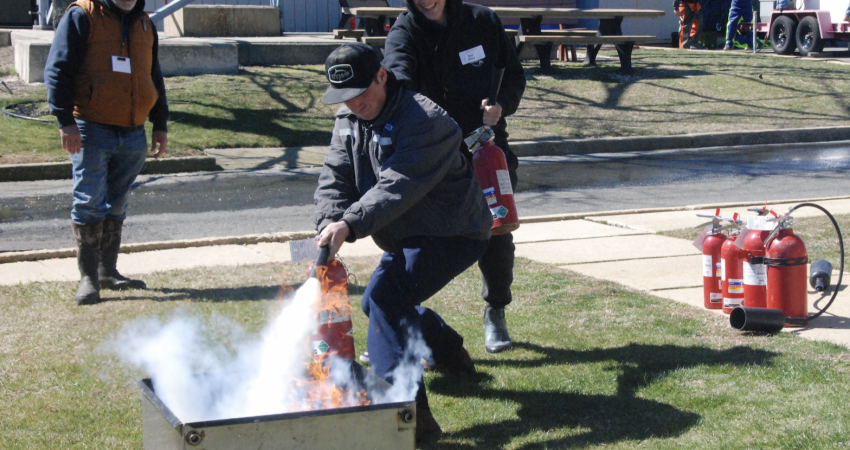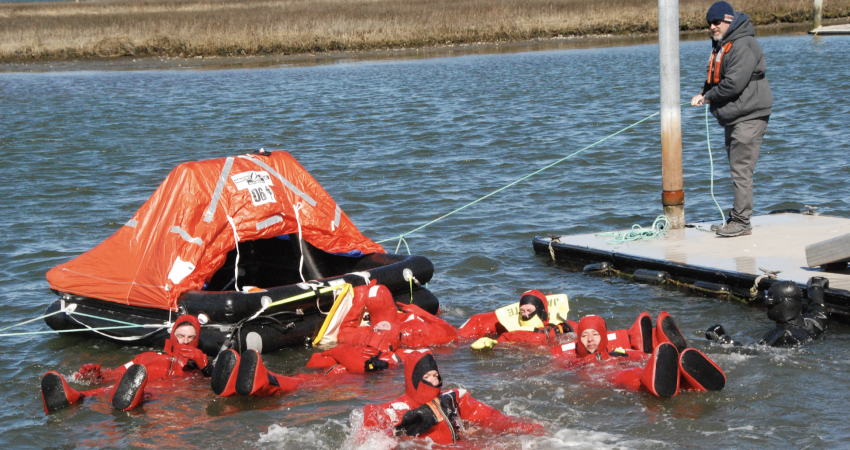With blue sky and a stiff northwest wind gusting 20 knots across Barnegat Bay, struggling into survival suits and jumping into 47-degree water at the town boat ramp was just the beginners’ class for how to abandon ship.
Imagine it in 40 knots and 20-foot seas, said instructor Dana Collyer.
“This is the most important piece of survival equipment you can have on the boat, bar none,” Collyer told fishermen at a March 21 safety course at Barnegat Light, N.J., with the non-profit group Fishing Partnership Support Services.
Collyer and other instructors coached fishermen on maintaining and tuning up survival suits. Small details matter. Collyer insisted that paraffin wax only be used to lubricate the zippers.
Even with light use in practice, the suits can be subject to wear and tear. But Coolyr added, “they’re $300. If you buy a new suit every five years, it’s not that much.”
New Jersey fishermen from surf clam and scallop boats, party and charter boats, and individual recreational boat owners came to the classes hosted by the Coast Guard Station Barnegat Light.

John Roberts, the safety training director for Fishing Partnership Support Services, says the Fishing Partnership, based in Massachusetts, conducts local safety training classes for fishermen from Maine to North Carolina. After his 31-year service in the Coast Guard, Roberts says conducting these safety classes “is the greatest second career.”
The Fishing Partnership draws a lot of knowledge from the Alaska Marine Safety Association, a longtime leader in fishermen's safety training. The federal Centers for Disease Control’s National Institute for Occupational Safety and Health provides funding; despite advances in safety, commercial fishing remains at the top of the nation’s most dangerous occupations.

Fully 30 percent of fatalities in fishing are man-overboard cases, Roberts stressed as the class convened, fishermen packed into the chilly boathouse at Coast Guard Station Barnegat Light.
“That’s why we’re trying so hard to change the culture around PFDs,” said Roberts.
Partnership instructors encourage fishermen to wear personal floatation devices (PFDs), showing off the new generation of PFDs that can be worn with fewer restrictions on movement and work on the boat. There’s also a financial incentive: government-funded reimbursement for fishermen who buy them.
With a staff of nearly 30 people, the Fishing Partnership draws on former commercial fishermen, Coast Guard, and marine surveyors for its training expertise. Fishermen’s wives are part of that cadre, working as community health workers who can assist fishing families. It’s all part of the Fishing Partnership striving for “cultural competence” in working with fishing communities, said Roberts.








